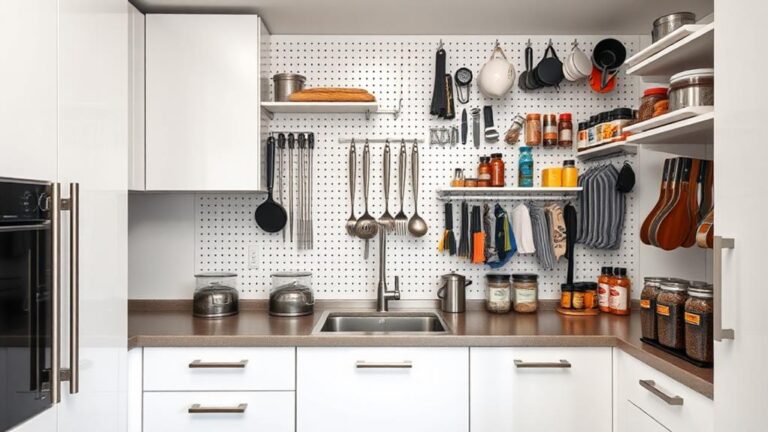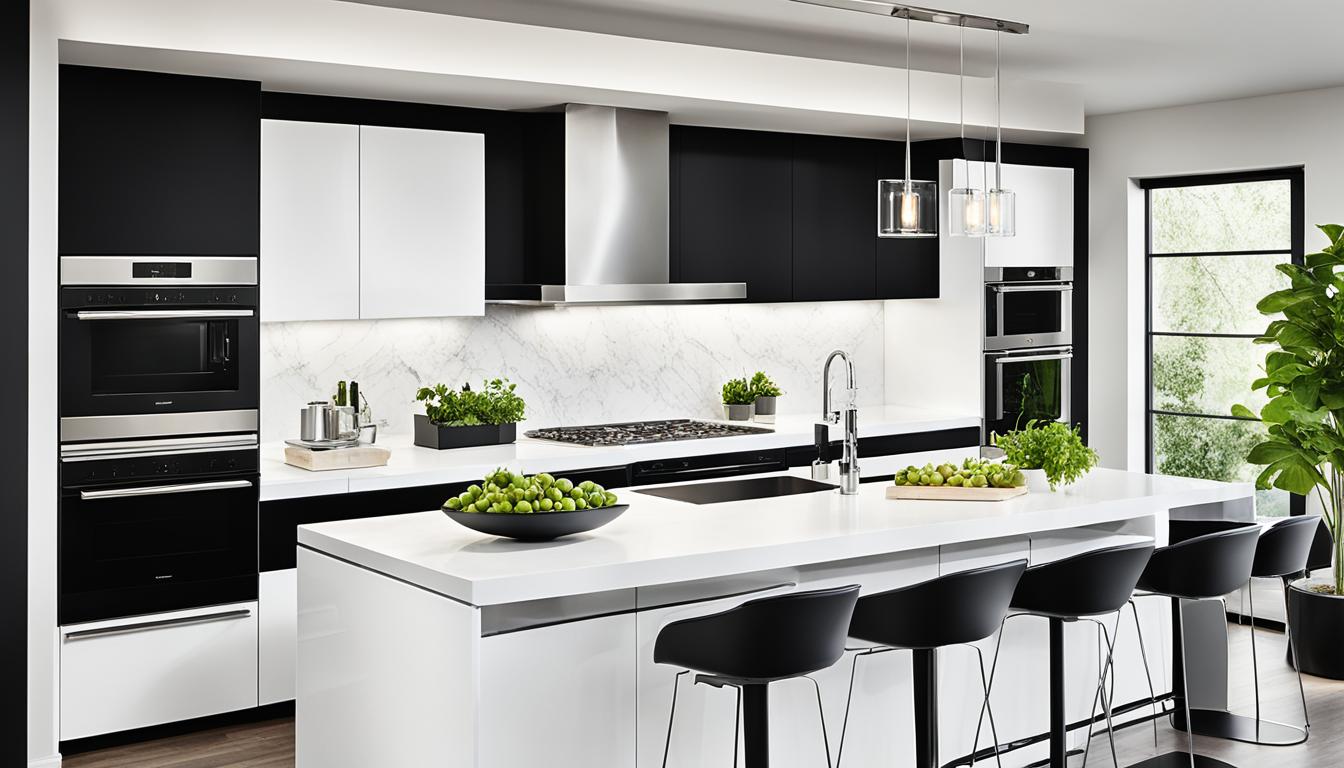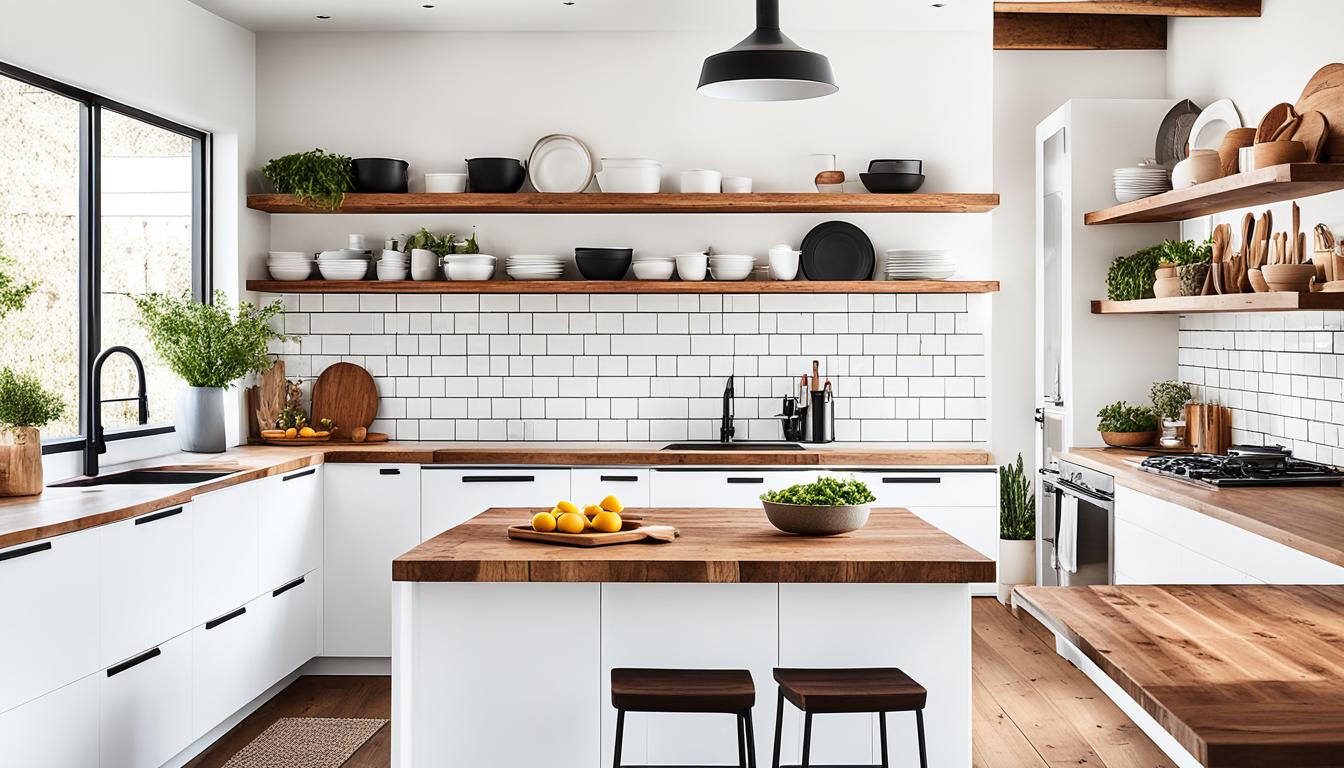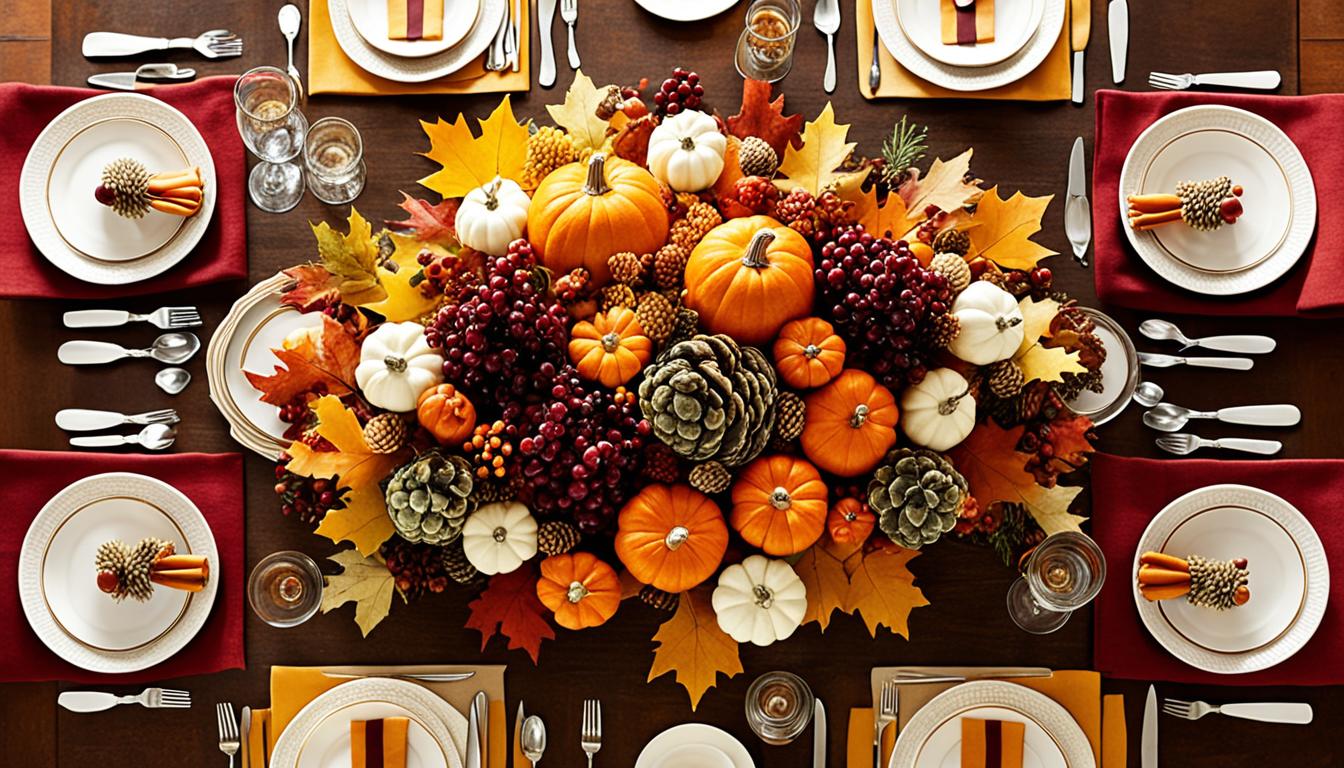Apartment Pantry Organization Ideas Storage
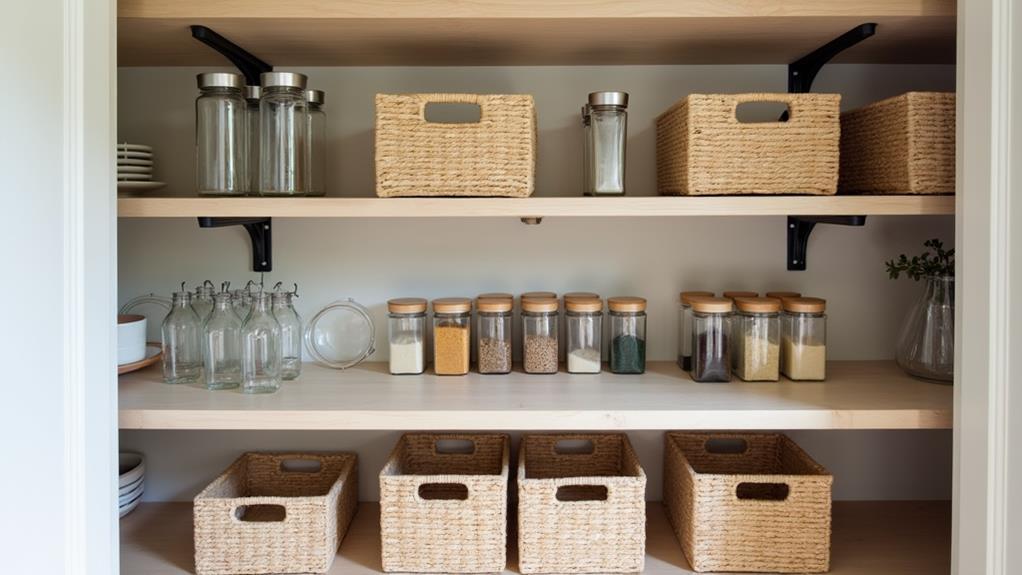
As we tackle the challenge of organizing our apartment pantries, we're faced with a formidable task: maximizing limited space while keeping our kitchen essentials within easy reach. We've all been there – digging through cluttered shelves, searching for that one ingredient or utensil. But what if we told you there's a better way? By implementing strategic storage solutions, categorizing items by frequency of use, and designating specific areas for specific items, we can transform our pantries into efficient hubs of culinary productivity. But where do we start, and what specific ideas can we use to get there?
Label Spices by Frequency
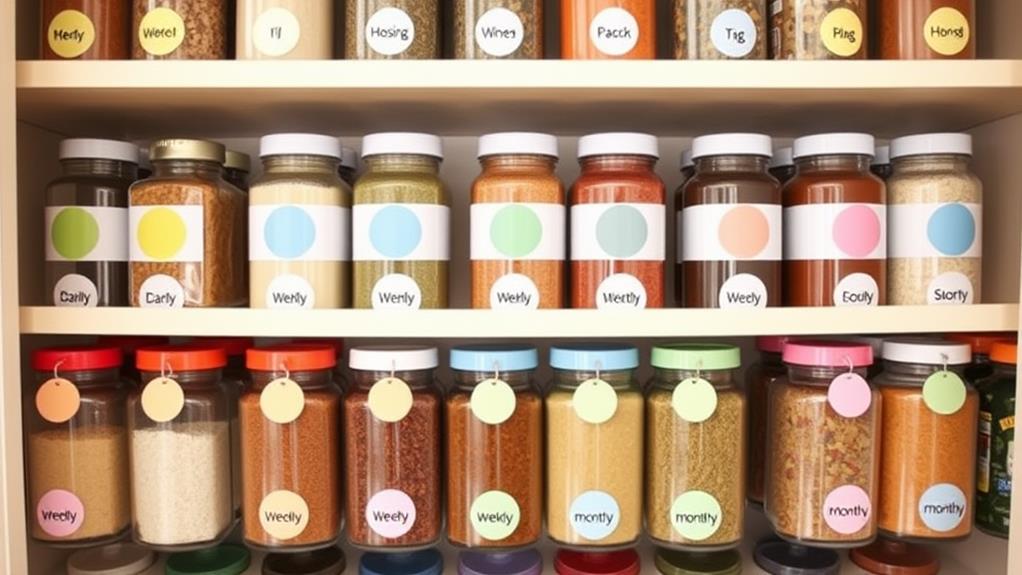
With our spices scattered all over the pantry, it's easy to get frustrated when we can't find the one we need.
To solve this problem, we use a labeling strategy that categorizes our spices by frequency of use. We divide our spices into three groups: daily, weekly, and occasional.
This spice categorization system helps us identify which spices we use most often and which ones can be stored towards the back of the pantry. We label each spice with its name and the frequency category it belongs to. For example, "Salt – Daily" or "Paprika – Occasional".
This way, we can quickly glance at our spice rack and find the ones we need. We also store our most frequently used spices in easy-to-reach locations, making cooking a breeze.
Store Heavy Items Below

We've optimized our spice storage, now it's time to tackle the heavier items in our pantry.
These items, like large cans, bottles, and containers, take up a lot of space and can be a challenge to store.
To maximize our pantry's storage capacity, we're going to focus on floor storage. This is where heavy-duty shelving units come in handy.
We can install shelving units that are specifically designed to hold heavy items, keeping them off the floor and out of the way. This won't only keep our pantry organized but also prevent damage to the floor.
By storing these items near the floor, we're also reducing the risk of them falling and causing a mess.
Additionally, we can use floor storage bins and baskets to store other heavy items like pet food, cleaning supplies, and bulk purchases.
Utilize Back Shelf Space

Now that we've optimized floor storage, our attention turns to the back shelf space, often an underutilized area in many pantries.
This space can be a game-changer for maximizing storage capacity. We can start by adding a shelf riser system to create multiple levels of storage, making it easier to access items in the back. This is especially useful for infrequently used or special occasion items.
To make the most of this space, we should consider the type of items we're storing.
For example, we can store dry goods like pasta, rice, or canned goods in airtight containers, keeping them fresh and organized. We can also add some back shelf decor, such as baskets or bins, to keep items like snacks or spices organized and easy to find.
Install Lazy Susan Turntable
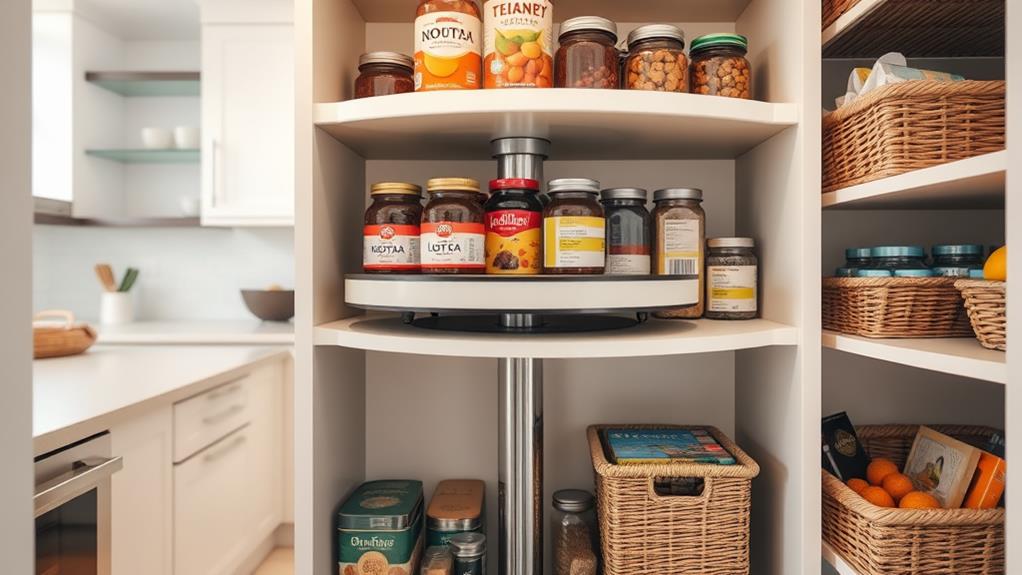
How often do we find ourselves digging through a cluttered pantry shelf, searching for that one specific item?
It's frustrating and time-consuming, but there's a simple solution: installing a Lazy Susan turntable. This clever storage hack allows us to access items in hard-to-reach areas with ease.
Here are some benefits of using a Lazy Susan turntable:
- Easy access: No more digging or straining to reach items at the back of the shelf.
- Increased visibility: Everything is visible at a glance, making it easier to find what we need.
- Reduced clutter: By keeping items organized and easily accessible, we're less likely to let clutter build up.
- Space-saving: Lazy Susans can be installed in tight spaces, maximizing storage capacity.
Lazy Susan benefits extend beyond convenience; they also help reduce stress and save time.
If a traditional Lazy Susan doesn't fit our space, we can consider Turntable alternatives, such as a carousel or spinning tray.
Whatever option we choose, the result is a more organized, peaceful pantry.
Store Snacks in Baskets

Located in the pantry's prime real estate, snack baskets keep our favorite treats within easy reach, freeing up shelf space for less frequently used items.
This simple yet effective approach allows us to categorize our snacks into groups, making it easier to find what we're craving. We like to separate our snacks into categories like sweet treats, savory bites, and healthy options.
When it comes to choosing the right basket style, we opt for ones with breathable materials like wicker or mesh to maintain airflow and prevent moisture buildup.
This is especially important for snacks like crackers or chips that can become stale quickly. For a more rustic look, we choose wooden or rattan baskets, while for a modern feel, we go for sleek metal or plastic designs.
Store Oils Near Stove
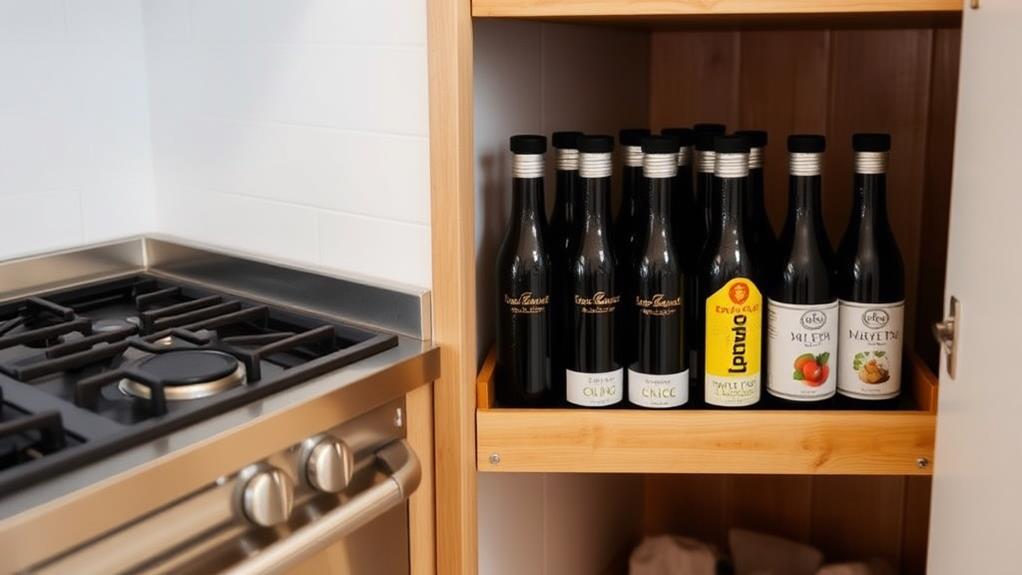
In close proximity to the stove, we designate a specific area for storing oils to guarantee they're always within arm's reach when cooking.
This strategic placement streamlines our cooking workflow, saving us time and effort. By creating an oil station near the stove, we can quickly grab the oil we need without interrupting our cooking flow.
We organize our oils in the following ways:
- Labelled bottles: We label each oil bottle with its type, ensuring we can easily identify them at a glance.
- Tiered storage: We use a tiered storage system to maximize vertical space, keeping less frequently used oils on higher shelves and easily accessible ones at eye level.
- Oil-specific containers: We store oils in containers specifically designed for oil storage, protecting them from light and heat.
- Easy-to-reach spot: We position our oil station in an easy-to-reach spot, allowing us to quickly access the oils we need without having to navigate around the kitchen.
Store Coffee Near Mugs
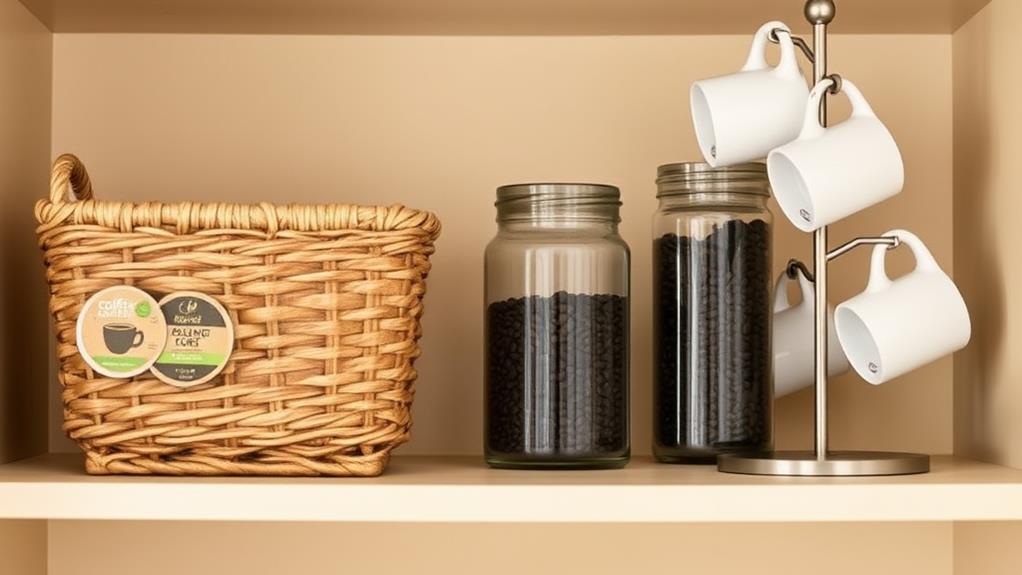
Our morning coffee ritual is simplified by storing coffee near our favorite mugs, creating a seamless shift from brew to cup.
This clever trick streamlines our morning routines, saving us precious time and energy. By designating a specific area for our coffee station, we can effortlessly grab our coffee beans, grinder, and brewer, all while keeping our countertops clutter-free.
We find it particularly useful to store our coffee near the mugs because it encourages us to clean up as we go.
After brewing a fresh pot, we can immediately wash and put away our mugs, preventing them from piling up in the sink. This thoughtful organization also allows us to display our favorite mugs proudly, adding a touch of personality to our kitchen.
Store Cookbooks by Author
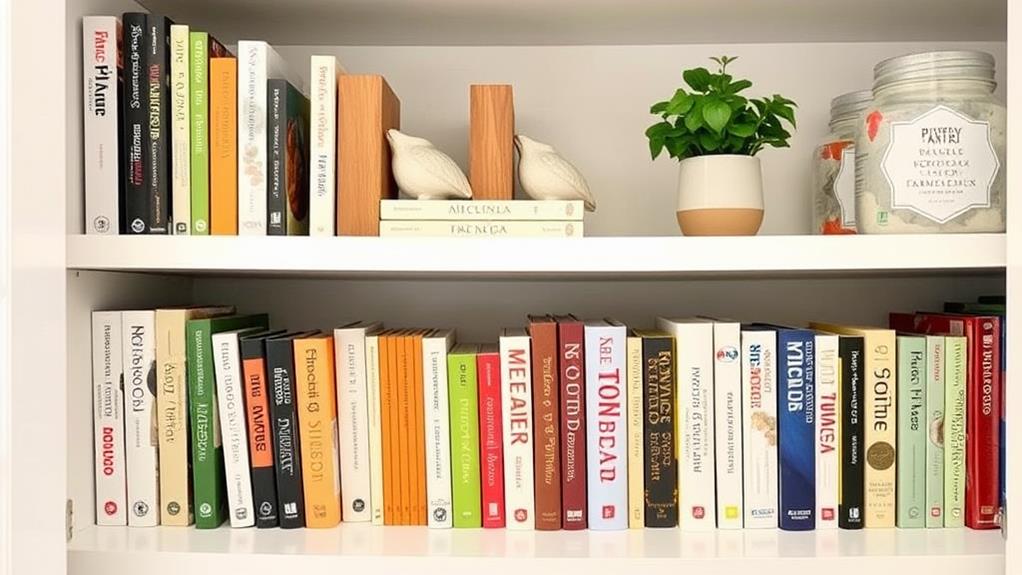
Scores of cookbooks line our shelves, each one a treasured resource for inspiration and guidance in the kitchen.
But when they're not organized, they can become overwhelming and difficult to navigate. That's why we've found it essential to store our cookbooks by author. This simple system allows us to quickly locate a specific book or explore the works of our favorite chefs.
- Dedicate a shelf: Designate a specific cookbook shelf for each author, making it easy to see at a glance what books we've by each chef.
- Group similar authors together: Place cookbooks by authors who share similar cuisines or cooking styles, like Italian or baking, in the same section.
- Alphabetize within sections: Organize books within each author section in alphabetical order, making it simple to find a specific title.
- Leave space for growth: Leave a little room on each shelf for new additions, so our collection can continue to grow without becoming cluttered.
Store Tea Near Teapot
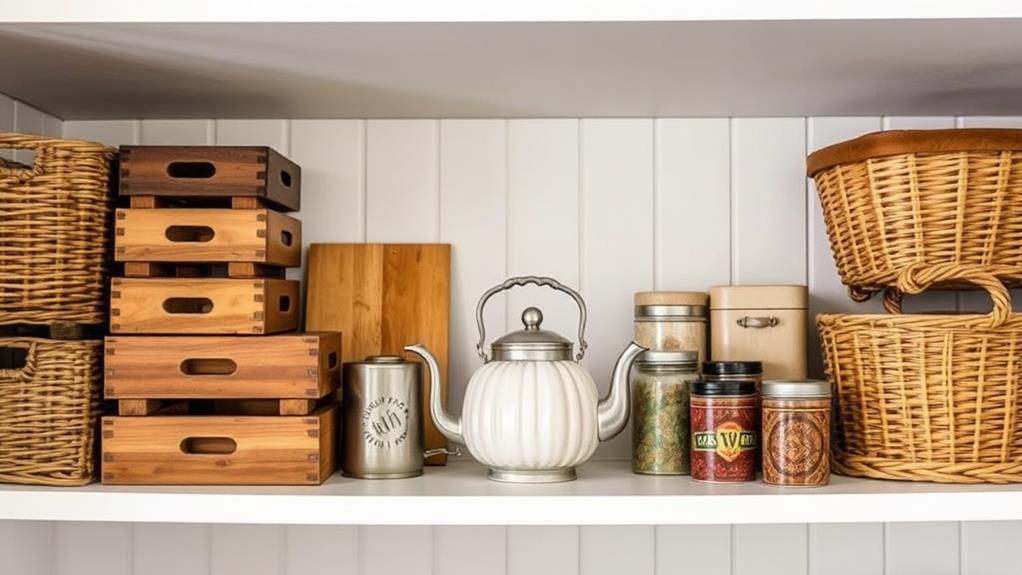
Savoring a perfect cup of tea is a daily ritual for many of us, and having our tea stash within easy reach makes all the difference.
To achieve this, we recommend setting up a dedicated tea station near our teapot. This way, we can quickly access our favorite tea flavors and blends whenever we need a soothing cup.
When organizing our tea collection, we consider the tea flavor profiles we have.
We group similar flavors together, such as herbal, black, green, or white tea, to make it easy to find the perfect brew. We also store our tea in airtight containers to preserve their flavors and aromas.
In our tea station setup, we allocate a specific shelf or basket for each type of tea.
This keeps our collection tidy and prevents clutter from building up. By storing our tea near the teapot, we can enjoy a perfect cup of tea whenever we want, without having to search the entire pantry for the right flavor.
Store Infrequently Used Items
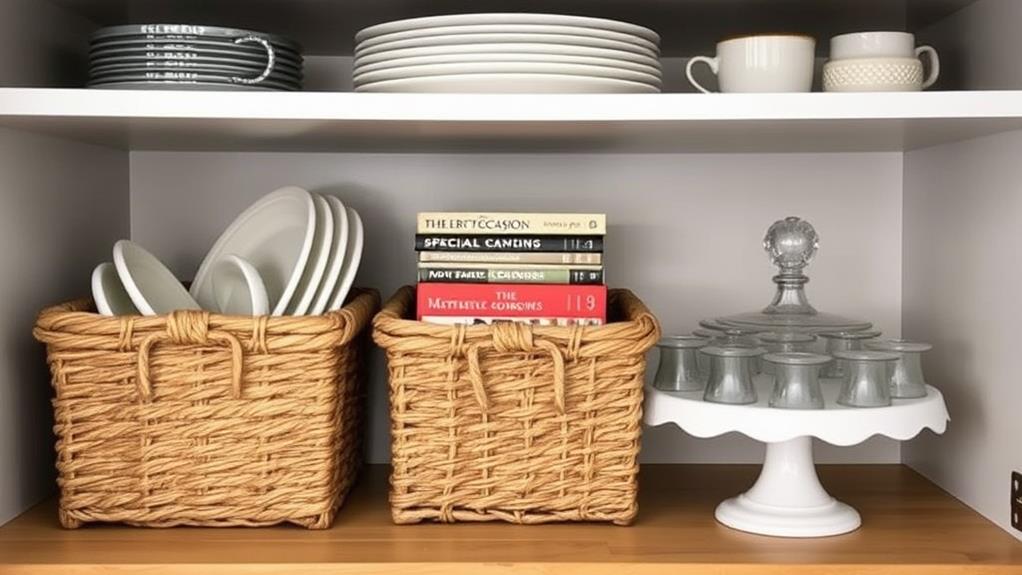
We tend to accumulate kitchen gadgets and specialty food items that we use only occasionally, but still want to keep them within reach.
To maximize our pantry's storage capacity, we need to allocate space for these infrequently used items wisely.
- Seasonal storage bins: Store seasonal items like holiday-themed cookie cutters, summer BBQ utensils, or winter spices in labeled bins to keep them organized and out of the way.
- High shelves: Reserve top shelves for items we use less frequently, like special occasion dishes, infrequently used cookbooks, or bulk purchases.
- Under-counter storage: Install slide-out drawers or baskets under our countertops to store items like slow cookers, stand mixers, or food dehydrators.
- Infrequent access zones: Designate a specific area, like a corner or a specific shelf, for items we use only occasionally, such as a pasta maker or a bread machine.
Store Pet Food Separately
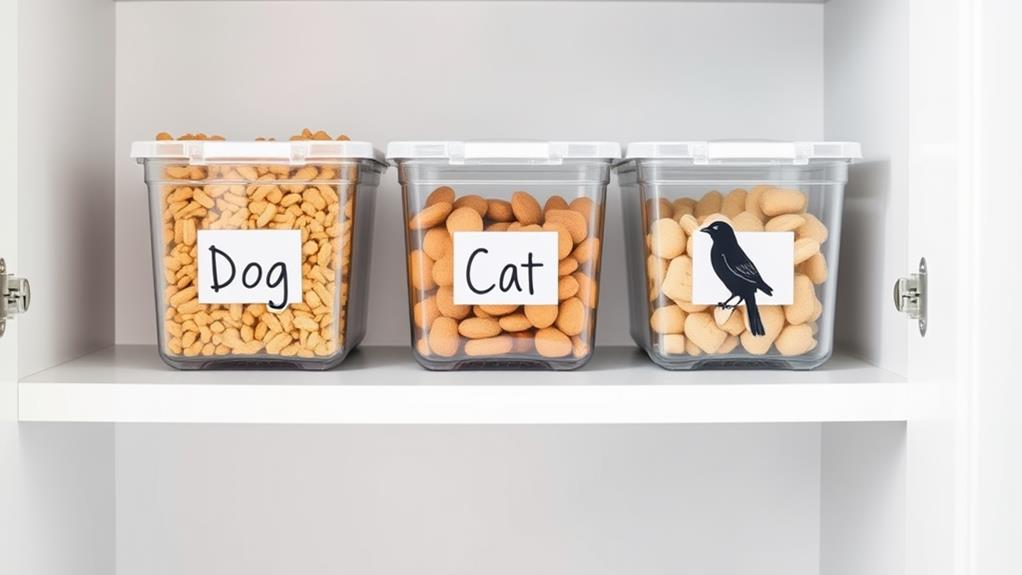
Since our pantries often double as a storage space for pet food, vitally, one must separate these items from human consumables to maintain cleanliness and organization.
We need to guarantee that our furry friends' meals are stored in a way that preserves freshness and prevents contamination.
When it comes to pet food storage, we recommend designating a specific area or bin for pet food and treats.
This will keep them away from human food and prevent cross-contamination.
Look for airtight containers or bins with tight-fitting lids to store pet food, as they'll help maintain freshness and prevent pests from getting into the food.
Additionally, consider storing pet food in a cool, dry place, such as a pantry or cupboard, to preserve its quality.
We also suggest labeling the containers or bins with the type of food and the date it was opened, so you can easily keep track of what you have and how long it's been stored.
Conclusion
We've optimized our pantry's storage capacity and made the most of every inch. By categorizing and labeling items, we've guaranteed that everything has its designated spot. With heavy items stored below and frequently used ones at eye level, we're saving time and energy. Our organized pantry is now a breeze to navigate, and we're excited to maintain this system that encourages us to clean up as we go.


